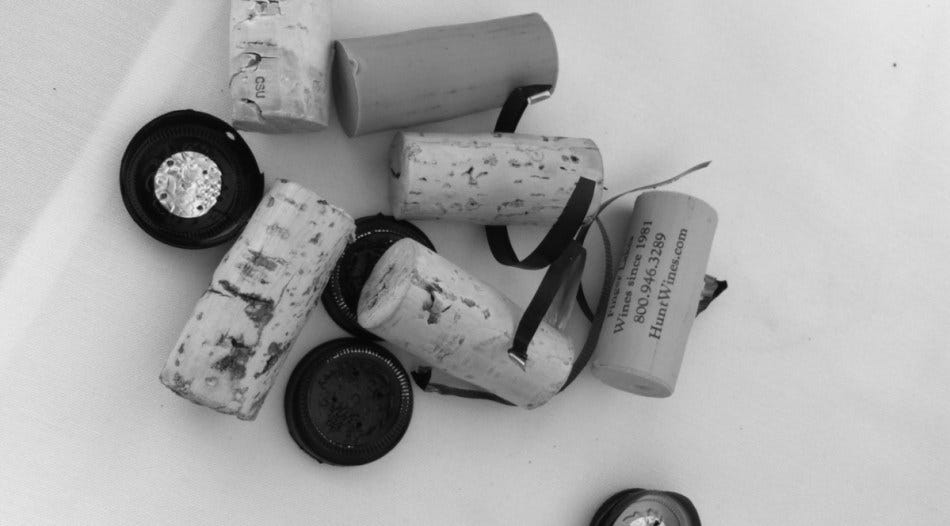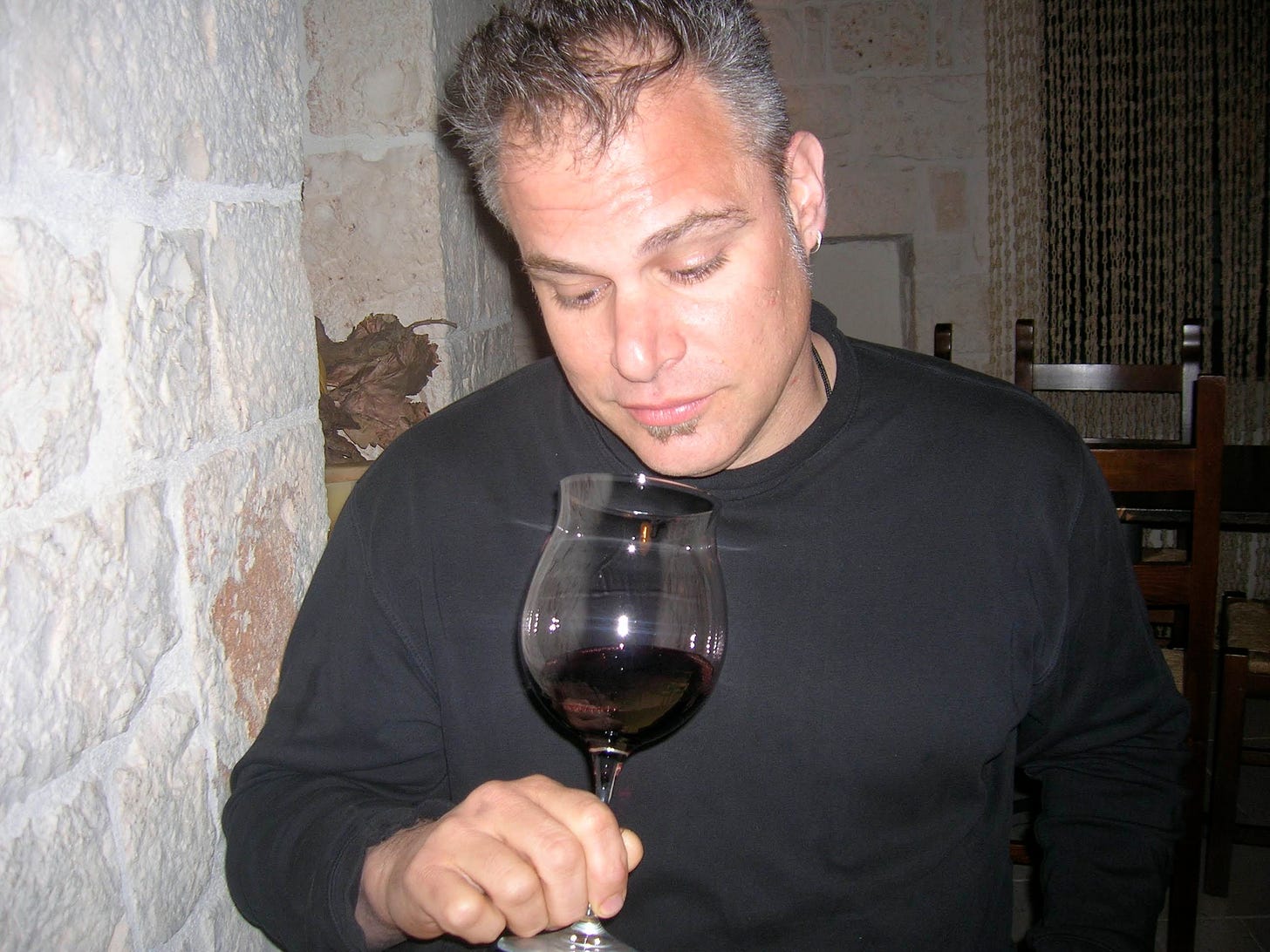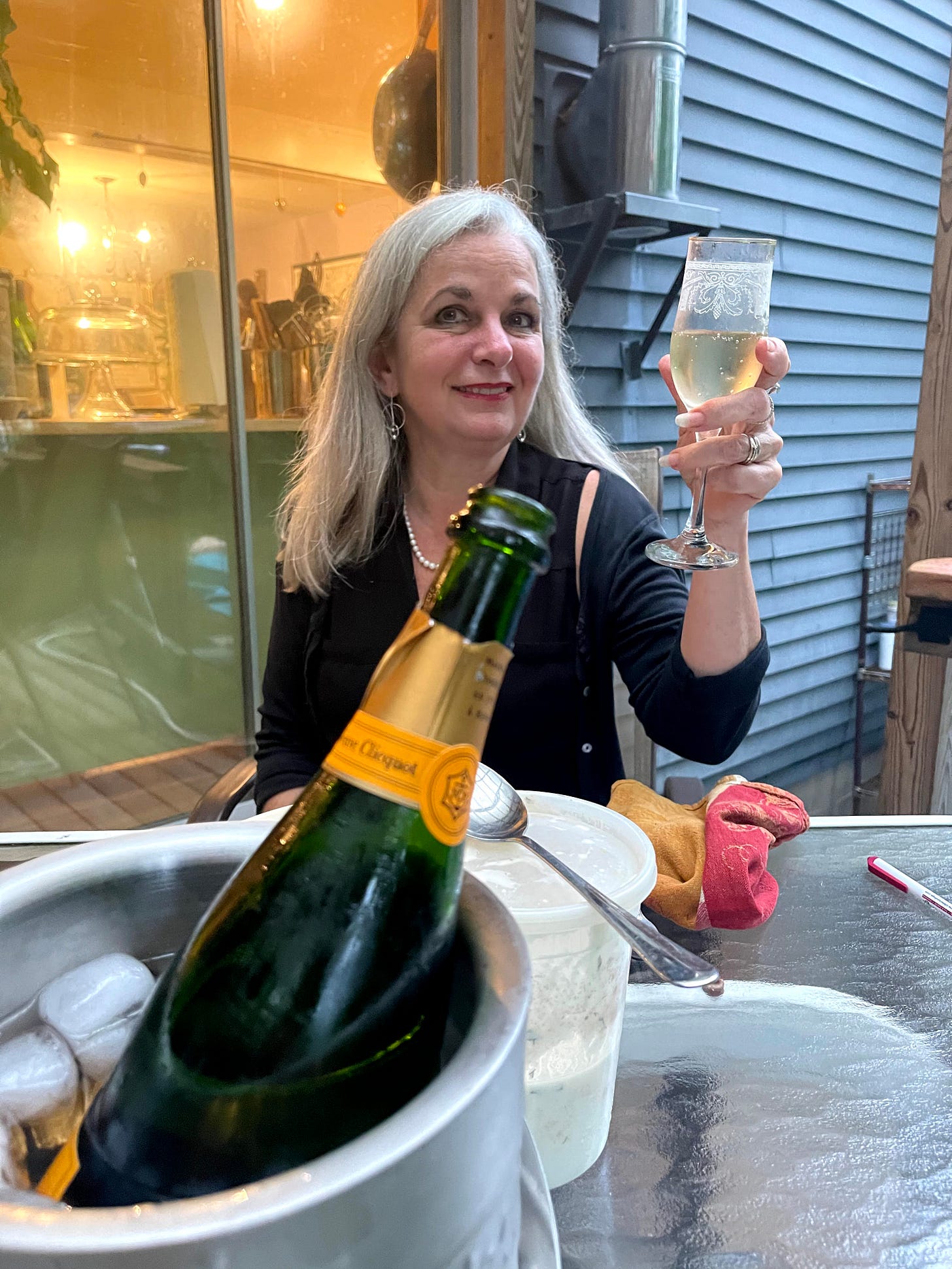In 1997 I launched a very popular wine dinner series at my Hudson Valley restaurant, New World Home Cooking Co. My good friend, Michael Weiss, a former Culinary Institute of America wine instructor, and I hosted about 30 wine dinners together over the next two decades. Unless all of the wine was provided by a single winemaker, I designed theme-based menus by wine region or food style. Anything was fair game for me. We did the usual wine dinners showcasing wines from Tuscany, Apulia, Alsace, Douro, Duero, Piedmont, Burgundy, Mendocino, Finger Lakes, etc. I also designed challenging food menus to pair with whatever wines would work. South Asia, Oaxaca, and Korea are some of the most challenging to pair wine with.
In 1998 I presented my first Seder Wine Dinner at the CIA. It was a big hit and an inspiration. From that dinner on, I offered secular Seder wine dinners at New World Home Cooking Co. for 15 years. By secular, I mean there was no reading, just food according to the rules of the seder and wine. Before cooking my first Seder, everything I knew about the Seder I learned in Catholic school. In the ’60s, I went to St. Francis Catholic School on Ferry Street, New Haven. Every year, Saint Francis served a Last Supper lunch on Holy Thursday. We had matzoh with grape jelly, roast chicken, carrots, and of course, grape juice. I was crazy about the pairing of matzoh and grape juice.
“These are the best crackers I ever had,” I told Father Farrell, our school principal. He was a short, compactly built man with a shocking white flat-top hairdo, short yellow teeth, and mottled pink skin. He was always dressed in his black full Roman collared shirt, snug black cuffed slacks that were a bit too short, white socks, and black penny loafers.
“Those crackers are the origin of the communion host,” he explained in a soothing alto voice.
“Nah,” I wisecracked. “They’re just giant saltines.”
“Once it is blessed, it becomes the body of Christ,” He said in a most sapient tone.
“Oh,” I replied with a combination of wonderment and nausea. I have always hated the concept of eating Jesus’ flesh. I made my stomach turn a bit.
Watch my homemade Matzoh video here
To live up to my reputation, I was driven to offer global interpretations of the Seder meal. I did deep dives, encountering many Seder recipes from the Jewish Diaspora. I developed Seder dishes influenced by all parts of Europe, South America, Africa, and even Asia. The attendees at the dinners experienced global creations like salmon-ginger gefilte fish, lemongrass Matzo ball soup, green chile tzimmes, Jerked shoulder of lamb, Peruvian blue potato kugel, and Moroccan Tishpishti cake. However, the most exhausting element of the menu development was selecting the wines. Michael and I, along with my wife Liz, were the tasters. We were always determined to find the optimum wine for each course, tasting as many as twenty bottles at a tasting. It was such hard work, but someone had to do it.
First, I would design a 5-course menu with no consideration for wine pairing. When the menu was completed, Michael and I would talk through the flavor components and intellectualize the wine choices. We began with a list of 3 or 4 possible wines for each dish. Then we would shake the trees of vendors and winemakers we knew for more samples that we considered ‘possibles.” They were always happy to supply us with mixed cases of wine that often included many that we didn’t think would work at all. The salespeople were doing their jobs, getting wines into my hands, hoping to get placement, if not on the wine dinner menu, then on my restaurant wine list. Obtaining samples was free for all back then; sorry you young chefs and soms missed those days.
The three of us (and later four of us, as Michael’s wife Jennifer started joining us after a few years) would take up a large 4 top in the corner of the dining room nearest the kitchen. It was set with menus printed grid style with 8 blank lines between each item so we could enter what wines we tasted and our ratings. We also were set with 8 glasses for each of us and two “dump” buckets for the table. Adjacent to us, we set a six-top with ice buckets, a bus box filled with ice, and an additional rack of glasses and, of course, the wines. We often gathered so many bottles that we had to store some on the floor. We worked with three criteria for pairing the wines: complimentary flavors, contrasting flavors, and extension of flavor. We scored the wine pairings, not just the wines, on a 1-10 basis.
One particular year we had a crazy experience. One pairing happened on the first try, which never happened before or after, while another took over an hour and 12 wines to conclude. The two dishes in question were Salmon-Ginger Gefilte Fish with a wasabi sauce on romaine spears and a North African seasoned Duck Confit with prunes and olives. The gefilte fish was creamy and just a bit bright from the ginger, with a nice bitter slap from the wasabi and lettuce. It was a one-punch knockout. Michael and I agreed in advance that a bright sparkler would be a perfect pairing, so we popped a bottle of Chateau Frank Brut. The wine was refreshing and delicious, with the signature apple essence of Finger Lakes Chardonnay and beautiful tiny bubbles of love. The three of us inhaled deeply and took a small sip of the wine. It was right on target. Then we all took a small bit of the salmon and a sip of wine.
“Damn, that’s perfect,” I said. “The wine made the salmon an effervescent mousse in my mouth.”
“Let’s try all of the components at once, eh?” Michael, a Montreal native, said Canadian style. “We need to see how the bitter components affect the wine.”
Michael, Liz, and I filled our mouths with the salmon dish components, chewed a bit, and then, almost simultaneously, took big slurps of the wine.
Liz spoke first. With her lawyer-like authority, she closed the case.
“That’s it. No further tasting needed,” she said.
Michael, who in reality just wanted to try more wines, suggested we open a Quincy or St Veran, just in case.
Liz said “No, this is it. We aren’t going to find anything better.”
“Damn,” I said. “I’m in.”
The lawyer schooled the wine expert and the chef.
The next course we worked on was the Duck. It was a very intense dish with deep layers of fat, salinity, dark fruit, olive brininess, and lip sticking gelatin-rich stock. We started with bubbles. We always started with bubbles. We didn’t follow the bubbles as the first course-only protocol. If it worked, we poured it at any stage of the meal. We assumed bubbles would cleanse the fat from the duck and brighten the rich duck stock while dancing with the prune’s tart-sweet flavor. While the duck and the prunes extended the flavor of a Domaine Carneros Blanc de Noirs beautifully, the olives set off too much bitterness. The next wine was Michael’s favorite, Iron Horse Brut Rose. He tried to get that wine on the menu for every wine dinner. It valiantly came close, but the prunes flattened the wine’s delicate fruit.
Michael explained, “I love Iron Horse, but if it doesn’t show perfectly, we can’t embarrass it.”
“I think I like it,” I said with a slight hint of trepidation.
“No,” Liz said as she looked at the wine and shook her head back and forth slowly… Case closed.
Next, we ventured onto a couple of Alsatian whites. Alsace was often an easy region to pair with salty dishes. We tasted a fresh Hugel Gentil and beautiful 6-year-old Albert Boxler Gewurztraminer. The wines were gorgeous on their own, but they also fell flat when paired with the flavor-bomb duck dish. We looked at the remaining whites we had on ice; a few chardonnays, a Greco di tofu, some nice young French whites, a Gruner, my favorite Morgadio Albarino, but after the previous failures, we rationalized that they would fail, too. We proceeded to move on to tasting some lighter reds. A generic Spanish grenache was next. Its pink grapefruit finish got humiliated by the punch of the sauce. The fruit of a well-made Morellino di Scansano was also crushed by the big dish.
“Let’s go big Rhone, It’s a no-brainer; power versus power will create a nice extension of flavors, and besides, I love Colombo,” Michael said with authority.
We opened a 5-year-old Jean-Luc Colombo Crozes-Hermitage, but again, the wine’s complexity was diminished by the intense flavor of the dish. After trying a few more run-of-the-mill Chilean and California reds, we considered a younger Rhone with fresher fruit the answer. Since I had none available, I looked in the sample box from one of my vendors for alternatives. I pulled out a bottle of Shingleback Black Bubbles sparkling Shiraz. When the case arrived a few days earlier, and I examined its contents, I didn’t even consider that Black Bubbles could make the cut. I figured we’d use it in a Sangria or something else at the bar later.
“Nah, don’t even bother,’ Michael snobbishly declared.
“What the hell, it’s Syrah,” I replied. “Let me give it a quick chill. We are running out of wines here unless you want to go with the Iron Horse.”
“I’d rather not,” said Michael.
“No,” Liz said. “It’s not the one.”
The black bottle made a clank as I plunged it into the linen-wrapped bus box filled with water and melty ice. The uncorked samples that didn’t pass the audition and unopened wines awaiting their moment in the spotlight looked like a high school chorus line waiting to take the stage. Five minutes in an Ice bath gave the Black Bubbles an adequate chill. I pulled it, wiped it down, popped it, and poured each of us about three ounces into red wine glasses. The bubbles formed a short pinkish head, and the wine was the color of Welch’s grape juice. The inky tart-sweet currant notes of the Australian shiraz, the creamy, frothy bubbles, and the cool temperature were a perfect pairing for the pesky duck dish. Live and learn! Tasting and tasting with an open mind is the key to a perfect pairing.
This type of R&D is a luxury that most home wine drinkers don’t have unless, unless, unless…you plan a dinner party around it. It’s a great drinking game for the gastronomic intelligentsia. Give 4 friends descriptions of two dishes you will be serving and have them bring a few bottles of wine that they think would pair perfectly. 10-12 bottles in all make for a decadent time, even if you only drink the equivalent of 3 or so glasses each. Make a grid for scoring and have your friends rate each pairing on a 1-10 scoring basis. It is good adult fun as long as everyone is honest with their feedback. And don’t worry about the leftovers. Have a cookout the following day and make a nice big punch bowl of sangria with the leftover wine.
Ric Orlando, West Hurley, NY April 1, 2023
Salmon-Ginger Gefilte Fish with Wasabi Mustard Sauce
Keep reading with a 7-day free trial
Subscribe to Think About Food to keep reading this post and get 7 days of free access to the full post archives.








